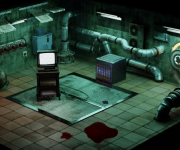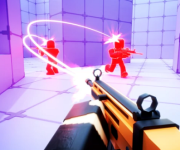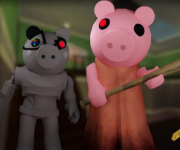Steal a Brainrot
Steal a Brainrot places players in a multiplayer environment where the main goal is to gather and manage unusual characters called brainrots. Each player has a personal base that produces income over time depending on the number and type of brainrots they own. New players begin with a small setup, gradually expanding it by purchasing or taking brainrots from others. The shared map creates a constant sense of competition, as all players can see and reach each other’s bases.
Ways To Get Brainrots
There are two main strategies for obtaining brainrots. You can spend in‑game currency to buy them from a moving conveyor in the center of the map, or you can steal them from other players if their bases are unlocked. Stealing can be risky since it slows movement and prevents carrying multiple items at once, giving base owners a chance to stop the theft. Locking a base protects it for a limited time, forcing thieves to find other targets.
- Purchase brainrots directly from the conveyor
- Steal them from unprotected bases
- Activate a base lock to prevent theft
- Retrieve stolen brainrots using defensive tools
- Rebirth to increase multipliers and base upgrades
Developing The Base
Your base serves as the core of your progress, where brainrots generate steady income. As earnings grow, players can invest in better defenses, more brainrot slots, and faster collection methods. The rebirth system resets progress in exchange for higher income multipliers, longer lock durations, and access to rare upgrades. Players who rebirth multiple times tend to dominate leaderboards due to their boosted efficiency.
Player Rivalries
Much of the game’s appeal comes from its social interactions. Players often scout each other’s bases, waiting for opportunities to grab valuable brainrots. Public chat is filled with bargaining, taunting, and warnings about active thieves. The visible display of rare brainrots can make certain players constant targets, leading to ongoing rivalries and shifting alliances within a server.
Long‑Term Engagement
Steal a Brainrot uses progression systems and optional purchases to keep players invested. Robux can be spent on premium tools, faster income boosts, and exclusive cosmetics. These purchases can make it easier to defend or steal, but skill and timing still play a large role. The game blends tycoon‑style building with direct player conflict, making each session unpredictable and competitive.







































































